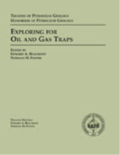Difference between revisions of "Paleogeography"
Jump to navigation
Jump to search
FWhitehurst (talk | contribs) |
Cwhitehurst (talk | contribs) m (added Category:Treatise Handbook 3 using HotCat) |
||
| (6 intermediate revisions by 2 users not shown) | |||
| Line 6: | Line 6: | ||
| part = Critical elements of the petroleum system | | part = Critical elements of the petroleum system | ||
| chapter = Sedimentary basin analysis | | chapter = Sedimentary basin analysis | ||
| − | | frompg = 4- | + | | frompg = 4-69 |
| − | | topg = 4- | + | | topg = 4-69 |
| author = John M. Armentrout | | author = John M. Armentrout | ||
| link = http://archives.datapages.com/data/specpubs/beaumont/ch04/ch04.htm | | link = http://archives.datapages.com/data/specpubs/beaumont/ch04/ch04.htm | ||
| Line 14: | Line 14: | ||
| isbn = 0-89181-602-X | | isbn = 0-89181-602-X | ||
}} | }} | ||
| − | Basin paleogeographic maps are useful prospecting tools. They help us locate and predict the occurrence of [[The seven critical elements of hydrocarbon accumulation#Reservoir rock|reservoir]], [[The seven critical elements of hydrocarbon accumulation#Seal|seal]], or [[ | + | Basin paleogeographic maps are useful prospecting tools. They help us locate and predict the occurrence of [[The seven critical elements of hydrocarbon accumulation#Reservoir rock|reservoir]], [[The seven critical elements of hydrocarbon accumulation#Seal|seal]], or [[Source rock|source]] [[lithofacies]] by establishing the location of major geographic features, such as [[Lithofacies and environmental analysis of clastic depositional systems#Deltas|deltas]], [[Lithofacies and environmental analysis of clastic depositional systems#Shoreline deposits|shorelines]], [[Reef|barrier reefs]], and [http://www.thefreedictionary.com/continental+slope slope breaks]. Once an [http://en.wiktionary.org/wiki/isochronous isochronous] surface or coeval interval is identified, paleogeography can be reconstructed by integrating maps of age-equivalent lithofacies, [[Seismic facies mapping|seismic facies]], [[Fossil assemblage|biofacies]], and thickness of reservoir-quality rocks. |
==See also== | ==See also== | ||
| Line 28: | Line 28: | ||
[[Category:Critical elements of the petroleum system]] | [[Category:Critical elements of the petroleum system]] | ||
[[Category:Sedimentary basin analysis]] | [[Category:Sedimentary basin analysis]] | ||
| + | [[Category:Treatise Handbook 3]] | ||
Latest revision as of 15:48, 1 March 2022
| Exploring for Oil and Gas Traps | |

| |
| Series | Treatise in Petroleum Geology |
|---|---|
| Part | Critical elements of the petroleum system |
| Chapter | Sedimentary basin analysis |
| Author | John M. Armentrout |
| Link | Web page |
| Store | AAPG Store |
Basin paleogeographic maps are useful prospecting tools. They help us locate and predict the occurrence of reservoir, seal, or source lithofacies by establishing the location of major geographic features, such as deltas, shorelines, barrier reefs, and slope breaks. Once an isochronous surface or coeval interval is identified, paleogeography can be reconstructed by integrating maps of age-equivalent lithofacies, seismic facies, biofacies, and thickness of reservoir-quality rocks.
See also
- Applying paleogeography to prospect identification
- Constructing a facies map
- Relating traps to paleogeography